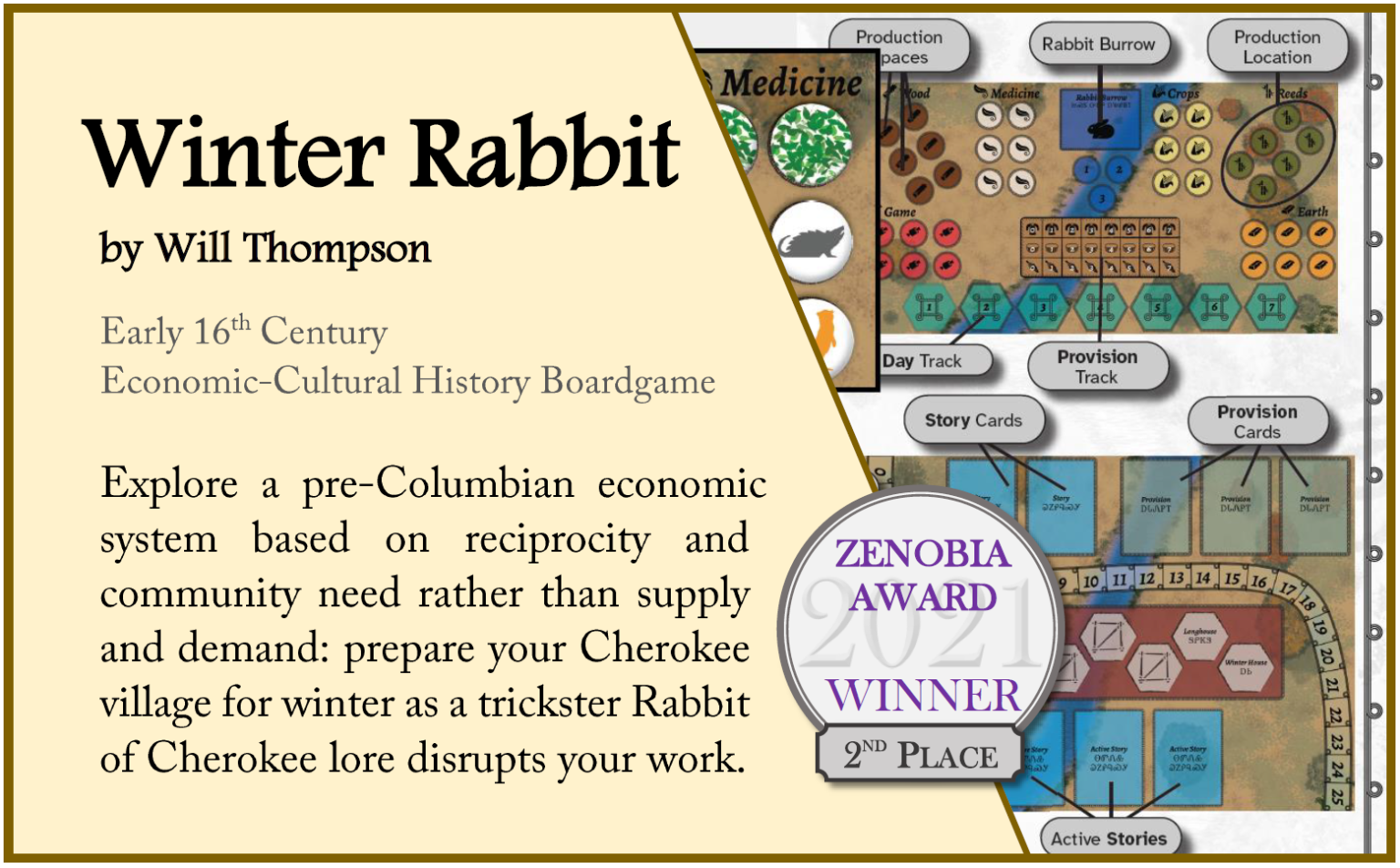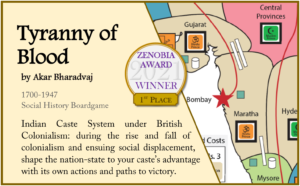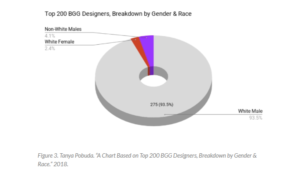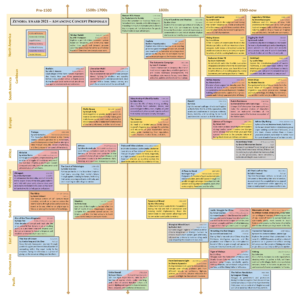
Do Diverse Game Designers Lead to More Diverse Designs?
The winners of the Zenobia Award for historical board games have been selected after a process of mentoring, reviewing, and selecting 150 applications down to 46 Proposals down to 8 Finalists over the period of 11 months.
And the well-deserved winner is Tyranny of Blood by Akar Bharadvaj, which focuses on the caste system in India during the British colonial period. And more specifically about the rise and fall of the colonial system there, as the game spans 1700-1947.
For new homes. Co-borrowers in drawing up a mortgage for a new building can be 3 people, each of whom will need to collect a certain set of documents at the request of the bank. For the aftermarket. Additional requirements are imposed on real estate – it should not belong to dilapidated housing, stand in line for major repairs or for demolition. Property purchased on the secondary real estate market must also be free of encumbrances. The bank will consider for a loan on the basis of an application for a package of documents for the take control of your finances purchased housing. For maternity capital. You will need a certificate of marriage, birth of children, a certificate for maternity capital. With its help, you can purchase any type of real estate, depending on the possibilities. For a share. In some cases, the bank is considering issuing a loan for a share in more detail, for example, when it comes to buying part of an apartment from a former spouse. The organization may require additional documents and information about the property in order to make a positive decision.You can watch the designer talking about his game with Liz Davidson and Mitch Reed here.

The second-place game is Winter Rabbit by Will Thompson. This game explores a pre-Columbian economic system. But instead of a typical 4X game (Explore, Expand, Exploit, and Exterminate), the designer created a much different 4C game (Conservation, Cultivation, Continuation, and Competition).
One Zenobia finals judge noted that
Instead of concerning itself with history as I typically think of it, it uses the Cherokee concept of oral tradition to set the stage for the game.
You can see Will’s interview here.

And the third-place game is Wiñay Kawsay by Alison Collins. There have been a number of games that have featured Machu Picchu, but not at this level of historical study. And certainly, not one that includes a critique of the academic process within it!
You can see Alison’s interview here.
In November of 2020, I interviewed Zenobia Award board members Volko Ruhnke and Harold Buchanan about the goals for this contest.
I felt it was worth going back to see if some of the important ideals stated by these board members came to fruition.
“Historical board games are enjoyed by people from all walks of life, but their designers are predominately white men. The Zenobia Award hopes to change this by encouraging game submissions by people from marginalized groups.”
Design teams from all 150 entrants prominently included individuals from a marginalized group (women, persons of color, and LGBTQ+ persons). In many cases, designs were being made by a single person, which increased the overall diversity of the candidate pool.
This is a bigger deal than it may look on the surface.
Tanya Pobuda found in her own research that 93.5% of the top 200 game designers on the popular board gaming site BoardGameGeek in 2018 were white males. Even allowing for a certain percentage of LGBTQ+ persons in this data, clearly the representation is very lopsided and not at all diverse.
The Zenobia designers are one small piece of this design world, but we hope their experiences and hard work will continue to push for more diversity in the game design space.
“The Zenobia Award is not an ordinary design award. Promising applicants will receive mentorship on their designs from established industry designers, and the winners will receive help navigating the game publication process in addition to a cash prize.”
The list of mentors and judges included not only successful game designers, but also academics and industry journalists. All with great experience in tabletop games and a desire to see the industry truly grow and expand. In addition, cash prizes were awarded; $5,000 for first place, $1,500 for second place, and $1,000 for third place.
And we are already seeing Zenobia designers signing deals to get their games published even as the contest is wrapping up.
Marcel Köhler’s excellent game Dutch Resistance: Orange Shall Overcome! is getting published by Liberation Game Design in 2022.
And Sobhi Youssef‘s intriguing game After The Last Sky is being published by The Deitz Foundation, the only non-profit game publisher in the U.S.
There will be more publishing news in the coming months and we cannot wait to see these games hit the shelves for others to play.
“The innovating power of fusing underrepresented with mainstream communities”
Now, this is a tougher one. What does this fusing really mean? We feel that it means not having separate communities that merely co-exist, but the real growth that can happen by seeing underrepresented and mainstream communities work together towards greater goals.
It has been gratifying to see the Zenobia Award getting coverage from mainstream gaming sites like Polygon and BoardGameGeek.
And Liz Davidson of Beyond Solitaire has released a series of videos to discuss each of the eight Zenobia finalist games with their game designers and Mitch Reed of No Dice No Glory.
We feel that this process needs to continue so diverse designers continue getting a chance to shine in friendly and welcoming places where their own unique takes on historical games can be showcased for others to see and be inspired by.
Zenobia designer Sobhi Youssef:
I think it taught me to not be afraid in reaching out to people in the industry… Conversely, I think it also taught industry participants to not necessarily ignore these interested designers.
It was a great program for both groups. In order for the hobby to grow, this kind of community building is absolutely critical. New designers have to put in work, but so do the veterans.
“As more diverse players grow into more diverse designers, how will the depiction in games of world history develop?”
Clearly we have seen that when a more diverse group of people are given support to design, prototype, and build games, we get rich stories and evocative gameplay that matches anything on the store shelves today. And more importantly, we also get some stories that have honestly not been getting told in games up until now.
The 46 game proposals (seen in the image above) that passed the first round of Zenobia Award judging shows the breadth not only of game designs but also the eras of time and parts of the world which were represented.
It is gratifying to see designers like Sherria Ayuandini talking about her finalist game From Darkness to Light, which focuses on the education of women during the struggle for independence in Indonesia. And Jo Kelly showing off their finalist game Molly House, which focuses on queer joy in the midst of oppression in 18th century London.
Designing for difficult subjects is not easy, but we have seen a number of designers take these subjects head-on in a sensitive manner, and not only make a fun experience but push forward the art of board game design.
Clio’s Board Games is a blog that discusses history in board games, and their discussion of decolonization in board games is a useful topic for looking at many of the Zenobia designs.
“The representation we seek is not just in game design.”
The desired follow-on effect of the Zenobia Award is helping to ignite greater representation in other areas of historical tabletop games. One example is San Diego Historicon, which is making strides in bringing more voices to the table by inviting more designers from underrepresented groups to showcase the games that they love.
The November 2021 online San Diego Historicon is online, and this allowed us to invite a more diverse group of designers who might not normally be able to fly to California for an in-person con.
In fact, the November convention will feature a Zenobia track with ten events showcasing different Zenobia designers, their games, and a panel led by Liz Davidson of Beyond Solitaire.
“Identity can be a big part of life experience”
Watching some Zenobia designers bring their own stories to the table, and others digging into their own histories has been a constant source of rich content for this contest.
This makes me think of games like Zenobia winner Tyranny of Blood by Akar Bharadvaj, Borikén by Julio E. Nazario, and Tindaya by Lolo Gonzalez.
These are personal games about personal stories and histories that we don’t always get to see in the popular marketplace. And the hobby is a better thing for their inclusion.
“Tabletop gaming is such a powerful medium to explore complex human affairs”
In the first five decades of historical game design (since the 1960s), we have seen game designs that are largely focused on military conflict. And many of them involve the most popular parts of Western military history like the Ancient Era, the Napoleonic Era, the Civil War, and World War 2.
While the past 10-15 years of historical board games have opened up avenues for other types of game designs, notably the COIN series of counter-insurgency games created by Volko Ruhnke and published by GMT Games, there is a blue ocean full of opportunities for different historical narratives to be told using board games as a medium.
Harold Buchanan, Zenobia board member:
Mentoring the applicants, judging their games and discussing them with the board changed my perspective on modeling history. The competition surfaced many ideas about modeling history and the history to be modeled that were beyond my paradigm before the process started. A diverse group of designers brought exactly what we were looking for, a diverse set of ideas and applications. It also challenged those of us that have been in historical game design for years to think about how our paradigm had limited us and what is truly possible.
“But, if you focus on who is at the table now, it gives us the potential to do big things.”
This was aimed at the question of whether we need entirely different publishing groups for underrepresented designers.
And the jury is still out on this question. Clearly we are seeing Zenobia designs getting published by companies that are supportive of diverse designers and new voices.
Would a brand new publisher for underrepresented designers help? Likely, but as we allow new voices into the hobby, this process of getting designs published could also happen within the existing network on publishers. It’s largely a matter of opportunity and openness.
Takeaways
Was the Zenobia Award a perfect process? As a chief judge, I would say far from it. And we have learned a lot from this process that we can improve in the future.
But did it meaningfully push the ball forward? Judging from the publishing and social media success we have seen from a number of contestants already, this appears to be the case.
The intent of the Zenobia Award was to show that a diverse set of game designers could not only deliver meaningful and fun game designs but that those games might showcase the diversity of the designers.
And from the game designs that have come out of Zenobia, I think it’s been a great success.
-Chris Bennett (disclosure: I was a mentor and chief judge for the Zenobia Award, and am a board member for San Diego Historicon)



